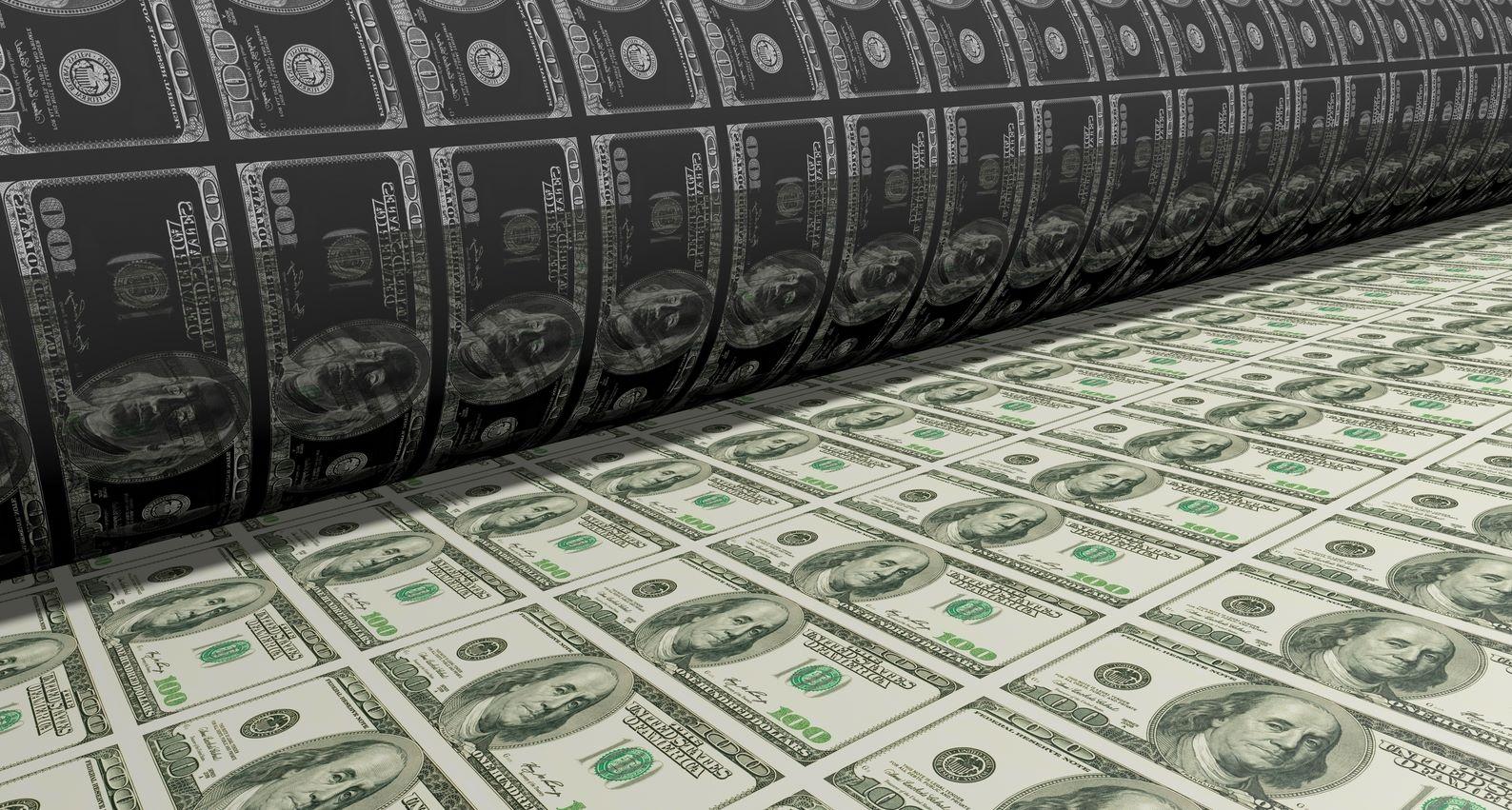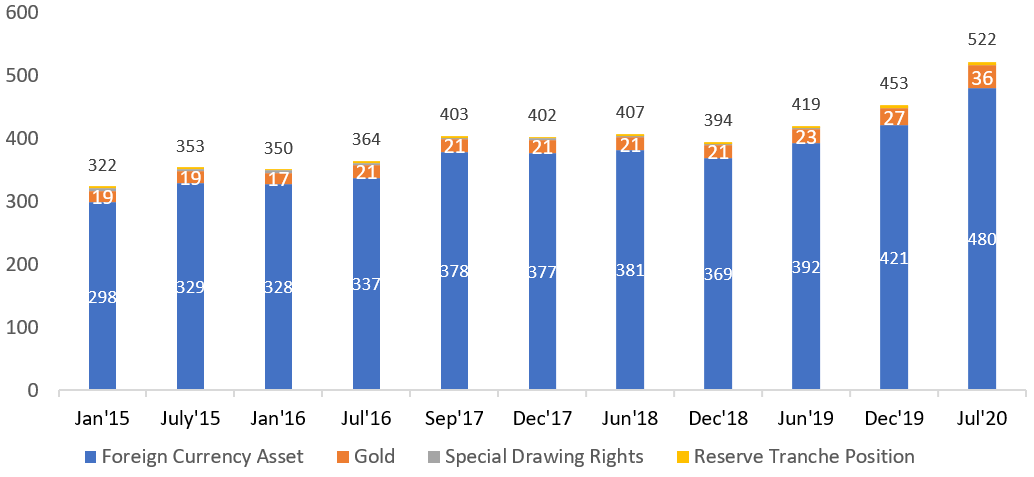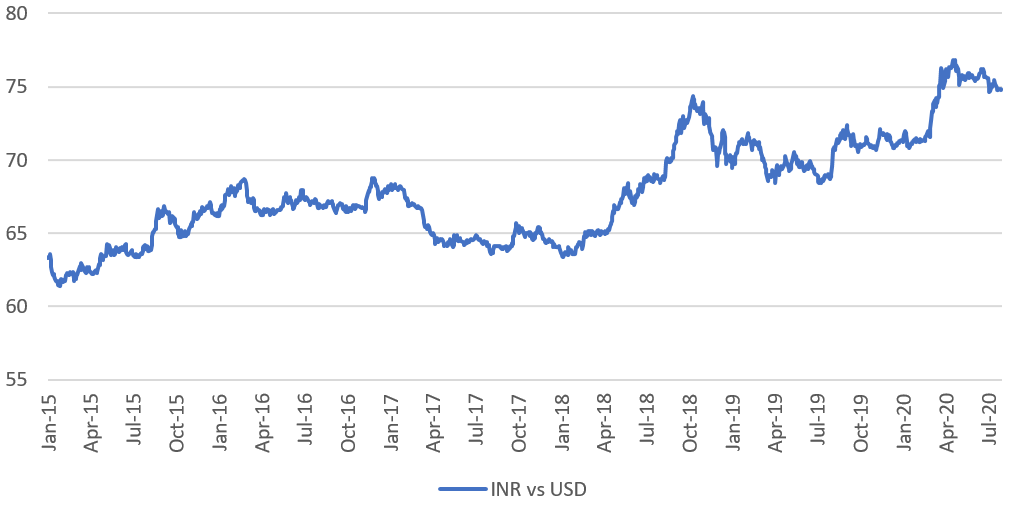India’s Rising Forex Reserves and Its Significance
Published on 21 Aug, 2020

India, at one point of time was on the verge of bankruptcy due to twin deficit and extremely low forex reserves worth about three weeks of imports. But for the first time in history, on June 5, Indian forex reserves crossed the USD500 billion milestone which can cover more than a year’s import. With its rising reserves, India should also focus on increasing returns on it to reduce net costs, thus bringing in greater benefits for the country.
In 1991, India faced a major financial crisis due to poor economic policies resulting in a twin deficit and extremely low forex reserves. The situation forced it to pledge its gold reserves to avoid the specter of bankruptcy as it had measly foreign exchange (forex) reserves of USD1.2 billion at the time, worth three weeks of imports. The country was financially mired for a while, but on June 5, 2020, India crossed a milestone of USD500 billion of forex reserves. The figure was a hundred-fold growth from that in 1991. So, we can say India has progressed much and assume is ready to face any financial upheaval.
Forex reserves are made up of external assets, namely, reserves of gold, reserve tranche position, the IMF’s special drawing rights (SDRs), and foreign currency assets [capital flows to capital markets, external commercial borrowings, and foreign direct investment (FDI)] accumulated by India. The country’s central bank – Reserve Bank of India (RBI) – controls the forex reserves. The main purpose of these reserves is to instill confidence in the exchange rate and monetary policies. The reserves also help absorb shocks during financial crises and when access to borrowing is curtailed.
The RBI Act of 1934 provides the legal framework for deployment of reserves in gold and foreign currency assets within the broad parameters of instruments, currencies, counterparties, and issuers. Almost 64% of the foreign currency reserve is held in securities such as treasury bills of foreign countries (mainly the US), 28% is deposited with foreign central banks, and 7.4% is held in foreign commercial banks.
As of March 2020, India had 653 tons of gold reserves, of which 360.7 tons was in safe custody with the Bank for International Settlements and the Bank of England. The rest remains within the country. In USD terms, the share of gold in India’s forex reserves increased from approximately 6.14% at the end of September 2019 to about 6.92% during June 2020.
The return earned on forex reserves held in commercial banks and foreign central banks is negligible. While the RBI has not disclosed the return on India’s forex investment, the figure is estimated to be 1%, or less, considering the low interest rates in the Eurozone and the US.
Trend in Foreign Exchange Reserves

One may wonder why forex reserves are on the rise despite the slowdown in the global economy. A key reason is the increase in investment by foreign portfolio investors (FPIs) in the Indian stock market and also FDIs. Foreign investors have taken up considerable stakes in several Indian companies over the past 2–3 months. After withdrawing INR600 billion each from equity and debt markets in March, FPIs expect a turnaround in the economy later during this financial year. This anticipation has prompted them to return to Indian markets and buy stocks worth over USD2.75 billion in the first week of June 2020. Forex inflows would be further boosted as the Reliance Industries subsidiary, Jio Platforms, drew a slew of foreign investments worth over INR1520 billion. Another notable factor is that the fall in crude oil prices brought down India’s oil import bill, thus saving precious forex. Additionally, foreign travels and overseas remittances crashed during the past few months, a situation that may continue until December 2020, which would further stanch dollar outflows. Though the rupee depreciated initially, due to outflows at the start of the pandemic, it has made a good comeback since foreign capital inflows have resumed.
Movement of INR vs. USD

The significance of rising forex reserves is that they bring comfort to the RBI and the Indian government in managing internal and external financial issues when economic growth is estimated to contract by 1.51% in FY20–21. More than USD500 billion is a big enough cushion for India’s import bills for over a year in the event of an economic crisis. The ratio of foreign exchange reserves to GDP is around 15%. These reserves create a positive sentiment in the markets that India can meet its foreign exchange needs and external debt obligations. It also demonstrates the backing of domestic currency by external assets while maintaining a reserve for emergencies and national disasters. Since the return on forex reserves is less than 1%, there should be greater emphasis on generating returns on forex assets rather than on liquidity, thus helping reduce India’s net costs. The money can also be deployed for infrastructure development. Thus, we can unanimously say that a rise in forex reserves is beneficial for India and with efficient usage, these reserves can bring in greater benefits.
